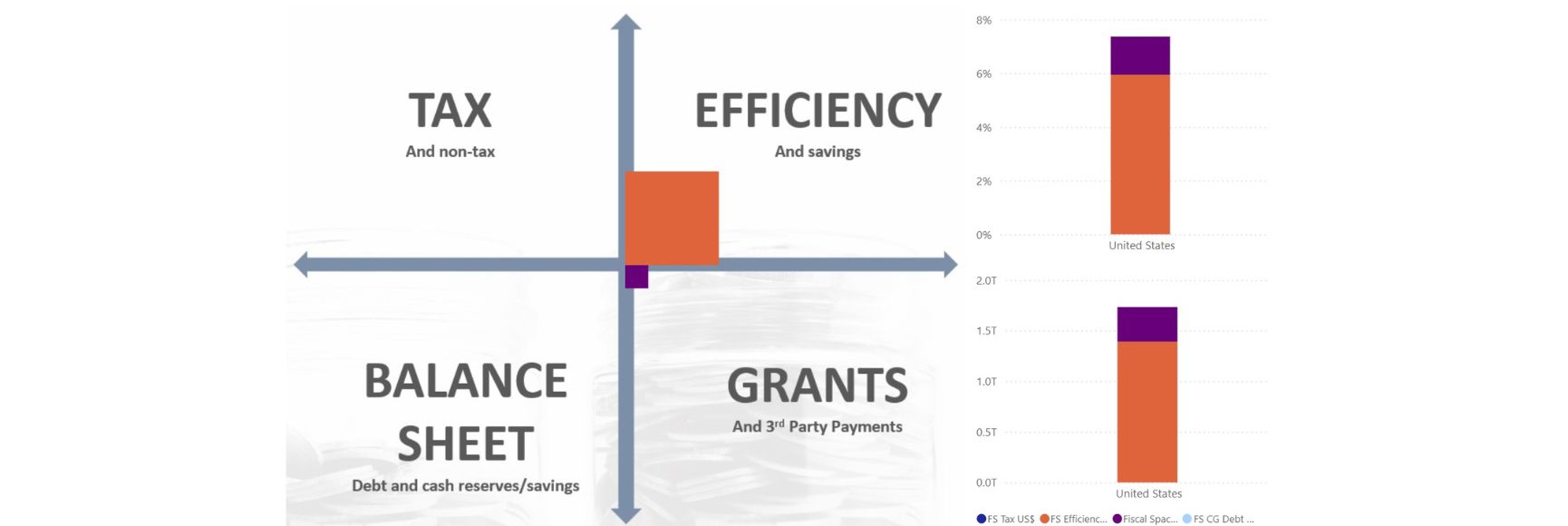Posted by Davina Jacobs.
 In a recent study of the organizational restructuring of the Ministry of Finance in South Africa since the start of the democratic government in 1994, Davina Jacobs found that four distinct phases in the transformation of the MOF in South Africa could be identified—firstly, the Department of Finance functioned separately from the Department of State Expenditure from 1994 onwards, although coordination was somewhat facilitated by having one Minister, the Minister of Finance overseeing both departments. In 1997 the Ministry of Finance was reorganized with the creation of the new Budget Office. The next phase included the merger of the Department of State Expenditure into the MOF with the creation of the so-called National Treasury and the last phase focused mainly on consolidating of all the major activities of MOF and fine-tuning some of its functions.
In a recent study of the organizational restructuring of the Ministry of Finance in South Africa since the start of the democratic government in 1994, Davina Jacobs found that four distinct phases in the transformation of the MOF in South Africa could be identified—firstly, the Department of Finance functioned separately from the Department of State Expenditure from 1994 onwards, although coordination was somewhat facilitated by having one Minister, the Minister of Finance overseeing both departments. In 1997 the Ministry of Finance was reorganized with the creation of the new Budget Office. The next phase included the merger of the Department of State Expenditure into the MOF with the creation of the so-called National Treasury and the last phase focused mainly on consolidating of all the major activities of MOF and fine-tuning some of its functions.
The organizational structure and functions of the MOF in 1994 were fragmented with two different departments, namely the Department of State Expenditure (responsible for treasury functions) and the Department of Finance (mainly responsible for fiscal policy and related matters). There were also two separate departments tasked with revenue collections, the Inland Revenue and Customs and Excise Departments. This led to sub-optimal work efforts and even in some cases in the duplication of functions.
As in many other countries the public financial management (PFM) reforms and the reorganization of MOF, did not stand alone—indeed, these reforms complemented other radical reforms in civil service. These parallel reforms started in 1995 with adoption of the White Paper on the Transformation of the Public Service (WPTPS). The WPTPS proposed the creation of a number of new and additional structures to add impetus to the transformation process. These structures included the creation of a Presidential Review Commission[1], together with a number of other structures such as the Public Sector Transformation Forum and Departmental and Provincial Transformation Units in 1996[2] with a view to recommend and make proposals regarding the transformation and reform as envisaged in the WPTPS.[3]
Another important civil service transformation issue was the introduction of affirmative action (AA) targets in the public sector in South Africa. The White Paper on AA in Public Sector adopted in 1996 aimed to provide a comprehensive framework within which national departments and provincial administrations will develop their own AA programs, structures, mechanisms and guidance. Amongst others, this entailed the setting of numeric (racial) targets for departments (and provincial administrations). To replace the current (predominately white male) senior civil servants, severance packages were offered for a period of time. In the space of a few years, the racial quotas were obtained by hiring of persons from the private sector, as well as the hiring of consultants to replace senior management staff in the departments. To retain younger professional staff, civil service rules were changed to make salaries more competitive. In the case of the Auditors General’s Office employment rules were streamlined to allowed it to sub-contract audits to private sector companies.[4] Also, in accordance with the South Africa Revenue Service Act 34 of 1997, the Inland Revenue and Customs and Excise departments were merged into one autonomous South African Revenue Service (SARS), outside the public sector with their own administration and employment rules.
In summary, the table below provides a summary of the main events in the transformation of the organizational structure of MOF since 1994.
Phase | Start Begin Date | Main reforms |
Phase I: Fresh start after 1994 Elections | 1994 | Business as usual in MOF, but with start of overall civil service reforms and affirmative action |
Phase II: Creation of Budget Office | 1997 | Emphasis on importance of the budget and related reforms (PFM Act and introduction of a MTEF) |
Phase III: Creation of National Treasury | 2000 | Merging of Departments of State Expenditure and Finance into a modern National Treasury |
Phase IV: Consolidation of reforms | 2008 | Consolidating and strengthening of functions in MOF, moving ahead with performance-based systems, etc. |
Main lessons learnt from South African MOF’s Restructuring:
South Africa has succeeded in radically altering the way in which it budgets for public services and how it accounts for public expenditure and commitments and it did so in a relatively short time and could not been done without changing the way the Ministry of Finance operates. But South Africa started this transformation with several advantages over other African countries – it has a modern economy that generates predictable resources for public spending, it has a functioning tax administration, donor financing is a minor proportion of its budget and it started off from a base where cash was relatively well accounted for and with comparatively good capacity in the public sector. However, several lessons can be taken from its reform experience:[5]
· There should be a strong central agency such the Ministry of Finance responsible for PFM reforms— the implementation of the MTEF and the PFMA was strengthened greatly by the amalgamation of the former Department of Finance and the Department of State Expenditure into the National Treasury.
· Institutionally, this has brought expenditure planning and monitoring together, and has located the full budget process, from macroeconomic forecasting and fiscal planning through to managing expenditure in-year and compiling reports on the state of the budget, under one executive authority and one accounting officer.
· Better integration in the budget process between budgeting and implementation has resulted. For example, one desk is now responsible for monitoring a spending department/sector, assessing budget plans and monitoring in-year performance. The unit responsible for determining budget planning modalities takes responsibility for managing the whole process, including reporting modalities.
· Mainstreaming the reforms from the start, through making it the only process and system through which funds are allocated and used, and having the central agency responsible for budget management and implementation responsible for the main reforms, has ensured that they have taken root.
· Build capacity of staff by demanding it, and support its development—transformation reforms were implemented in a comprehensive and disciplined manner, changing the incentives for staff of MOF, and they were supported through linkages with public service management frameworks, for example the Public Service Regulations.
· This immediately placed increased demands on spending departments, which often did not have the capacity to comply in any meaningful way and were forced to develop it fast. The NT, however, developed specific strategies (for example, in the implementation of the PFMA) to support the development of the capacity in line agencies.
· Get cooperation from civil servants early on—there was some resistance in the beginning as uncertainty about employment prospects for the more senior staff in the MOF increased.
· Down-sizing (mainly staff taking severance packages in the early years) was relatively small but some redeployment from NT to provincial treasuries took place.
· Get full political commitment to PFM and related transformation reforms from the start—these transformations which would lead to PFM reforms were driven in South Africa by a political commitment at the highest level (including the President and full Cabinet) to realistic macroeconomic projections, sensible budgeting norms, good accounting practices and regular reporting through transparent budget documents.
· The Minister of Finance in South Africa played a crucial role in convincing his colleagues at Cabinet level about the importance of MOF’s transformation and related PFM reforms and he provided regular feedback in the early stages on progress and achievements.
· A simple framework and transparent norms—it is important that everyone involved in the budget process understands the reforms and the need for restructuring. This is the only way in which they will be able to fulfill their adjusted responsibilities in such a manner that the reforms achieve their objectives.
· In the case of South Africa, reforms centered on putting in place credible medium term plans. This was done through simple frameworks that were easy to communicate by MOF staff to line ministries and easier to implement than systems with high levels of complexity.
· However, the complexity of the system has been growing in recent years as capacity and understanding develop, both in MOF and in line ministries.
· A phased approach allows for a clear and frequent communication strategy about the proposed transformation and avoid possible mistakes as it allows time for corrections—the transformation of MOF in South Africa illustrates the importance of being clear about objectives, getting the principles right when designing new structures to fulfill those objectives, and letting realism guide the process and the speed with which it is implemented.
[1] The PRC was officially titled “The Commission of Inquiry Regarding the Transformation and Reform of the Public Service”.
[2] The PRC had a specific mandate to: (i) “inquire into the structures and functions of the public service and its statutory bodies; (ii) conduct an internal audit and review of each ministry, department, provincial administration, organizational component, office and agency concerning its objectives, (iii) structure, function, staffing, financing and related matters; and (iv) conduct a review and revision of the systems, routines and procedures of planning, budgeting and financial execution in the public service, to increase public accountability”.
[3] Refer to Notice No. 1227 of 1995, published in the Government Gazette No. 16838 of 24 November 1995.
[4] See the 2002 unpublished FAD Fiscal Transparency ROSC report.
[5] This section draws, amongst others, on the analysis set out in Fölscher, A. & Cole, N., 2006, South Africa: Transition from to Democracy Offers Opportunityfor Whole System Reform, OECD Journal on Budgeting, Vol. 6, No. 2.





